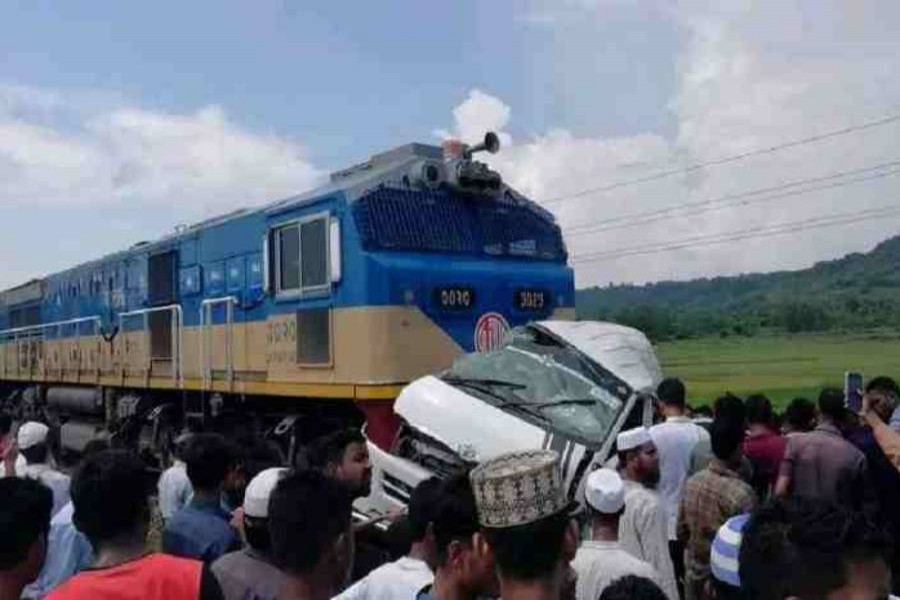Railway accidents in Bangladesh are not purely about collision between trains or derailment of a train and their attendant deaths and injuries. Though it may sound somewhat odd, many of such accidents involve speeding trains ramming buses, trucks, microbuses, you name it.
Since road transports like buses and other kinds of automobiles run on different tracks than trains, ideally, they should not cross each other's path to cause any accident.
But it happens and in Bangladesh it does so too often.
The July 29's accident at the level crossing near the Baratakia railway station under Mirsharaiupazila in Chattogram is one such tragedy that shocked the nation.
The11 who died in that accident were mostly school students in their teens. The dead also included coaching teachers of those students including driver of the ill-fated microbus in which they were travelling. As reports go, the victims were returning after visiting the nearby Khoyasara spring when they were run over by a Chattagram-bound train coming from Dhaka.
But the circumstances of the accident are yet to be clear. For there is no answer to why the microbus was on the level crossing when the train was so close. Either the guard at the level crossing or the driver of the microbus or both might be at fault. For most of the level crossings, many of them unauthorised, are not well-guarded. Those at the driving seats of the motorised road transports are also often in a rush or have little respect for traffic rule.
The guard of the level crossing in question is learnt to have been arrested. But he is an insignificant cog of the wheels of a bureaucracy known for its sloth and inefficiency.
According to the Accident Research Institute of the Bangladesh University of Engineering and Technology (BUET), during the last one decade and a half 5,000 accidents took place at Bangladesh's railway crossings. Which is more than 333 accidents per year.
Between 2020 and July 2022 alone some 116 accidents took place between trains and road transports with a death toll of some 219 people.
Of course, the victims were all passengers of motorised vehicles.
Notably, Bangladesh has about 2, 000 miles of railway line which is crisscrossed by more than 2,500 level crossings. That is about 8 level crossings per every 10 miles of railway line.
Railway tracks crossing roads, however, is a common scene wherever train service exists. And accidents at the level crossings are also nothing out of the ordinary. In India, for example, the total length of the country's railway track is over 61620 miles. And there are 19,000 level crossings. In other words, for every 10 miles of its railway lines India has more than 3 level crossings. In that case, Bangladesh has more level crossings (more than 2.5 times) per mile of railway line than in India.
And at these railway crossings, India saw some 1788 accidents in 2019.
But considering the number of level crossings and the size of India's railway traffic, the number of accidents reported in 2019 cannot be said to be too high. Moreover, accidents at the level crossings, reportedly, saw a 20 per cent increase in the reference year (2019) than before.
Against this backdrop, Bangladesh railway needs to be extra cautious in maintaining its level crossing, if only because the railway lines are spread across a small, densely populated country like Bangladesh.
Bangladesh Railway reportedly spent Tk.1.16 billion under two projects undertaken in 2015 to improve safety level and other aspects of the level crossings.
But then how can one explain the glaring instance of gross negligence of duty at the level crossing in Mirsharai that has left an entire village mourning the deaths of its children?
Who is to take responsibility for the avoidable tragedy that took so many innocent lives?


